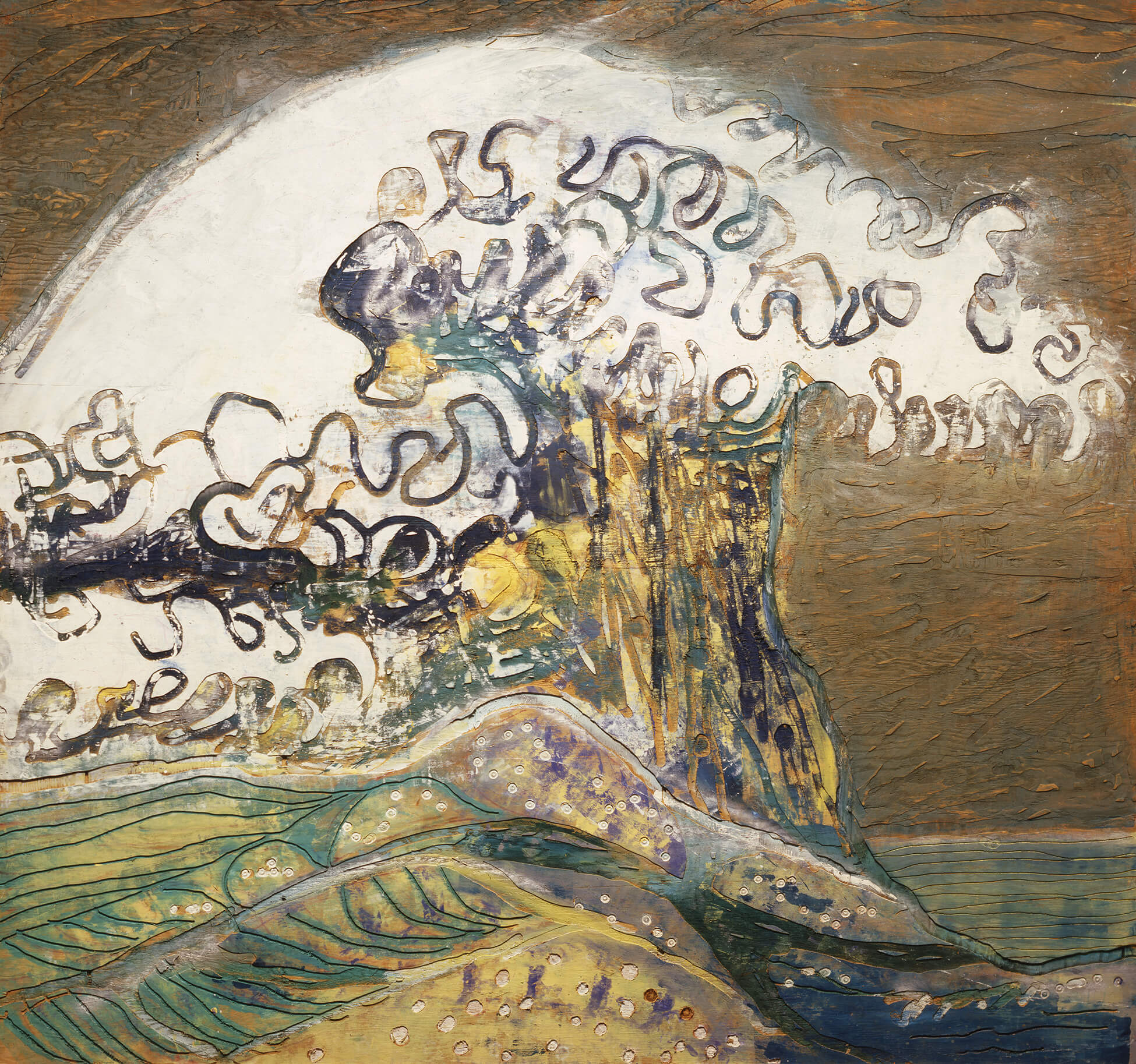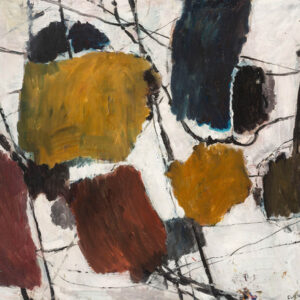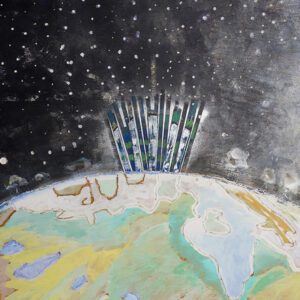The Great Wave—Homage to Hokusai 1974

Paterson Ewen, The Great Wave—Homage to Hokusai, 1974
Acrylic on gouged plywood, 243.9 x 243.9 cm
Art Gallery of Windsor, Ontario
The Great Wave—Homage to Hokusai conveys the sheer power of Paterson Ewen’s gouged plywood works. Ewen fully embraced the use of the electric router around the time of this work, and in the machine’s deep, rough cuts we can feel the building force of a huge wave and its potent physical presence. It suggests an entirely new way of looking at the landscape—not as a land to be tamed or nurtured, but as forces of nature that exist all around us. It is both beautiful and violent.

The Great Wave speaks to many of the influences on Ewen’s work generally. As a child, he was given a book of woodblock prints by the nineteenth-century Japanese artist Utagawa Hiroshige (1797–1858) that kindled his interest in ukiyo-e artists, including Katsushika Hokusai (1760–1849), on whose classic print Under the Wave off Kanagawa (also known as The Great Wave), c. 1830–32, this work is based. Ewen was also an admirer of Vincent van Gogh (1853–1890), who avidly collected this Japanese art and frequently borrowed elements from it in his own works. Both men appreciated that “the Japanese artist’s method was to go out into the rain or to observe a tree or a bird or a flower or a wave but he would never try to depict it then. He would simply observe it and when he had captured enough of it in all levels of his being, then he would go back and do it.”
Ewen spoke about his own process for creating this work: “[I] looked at many versions, all reproductions of the print, all differing in colour, paper, ink quality and none that close. I just wanted a big wave and was quite ready to let Hokusai influence me in the making of a great wave … all I wanted was sky and water … you take what you want and leave out what you want, that is the great luxury of the artist.” Here, Ewen refers not only to The Great Wave but to the art of Japanese woodcuts. As Ewen recognized, “What my tools do is they make grooves which are not unlike the furrows van Gogh painted in.” Or those the Japanese masters so painstakingly cut a century before.

 About the Author
About the Author
 More Online Art Books
More Online Art Books
 Acknowledgements
Acknowledgements